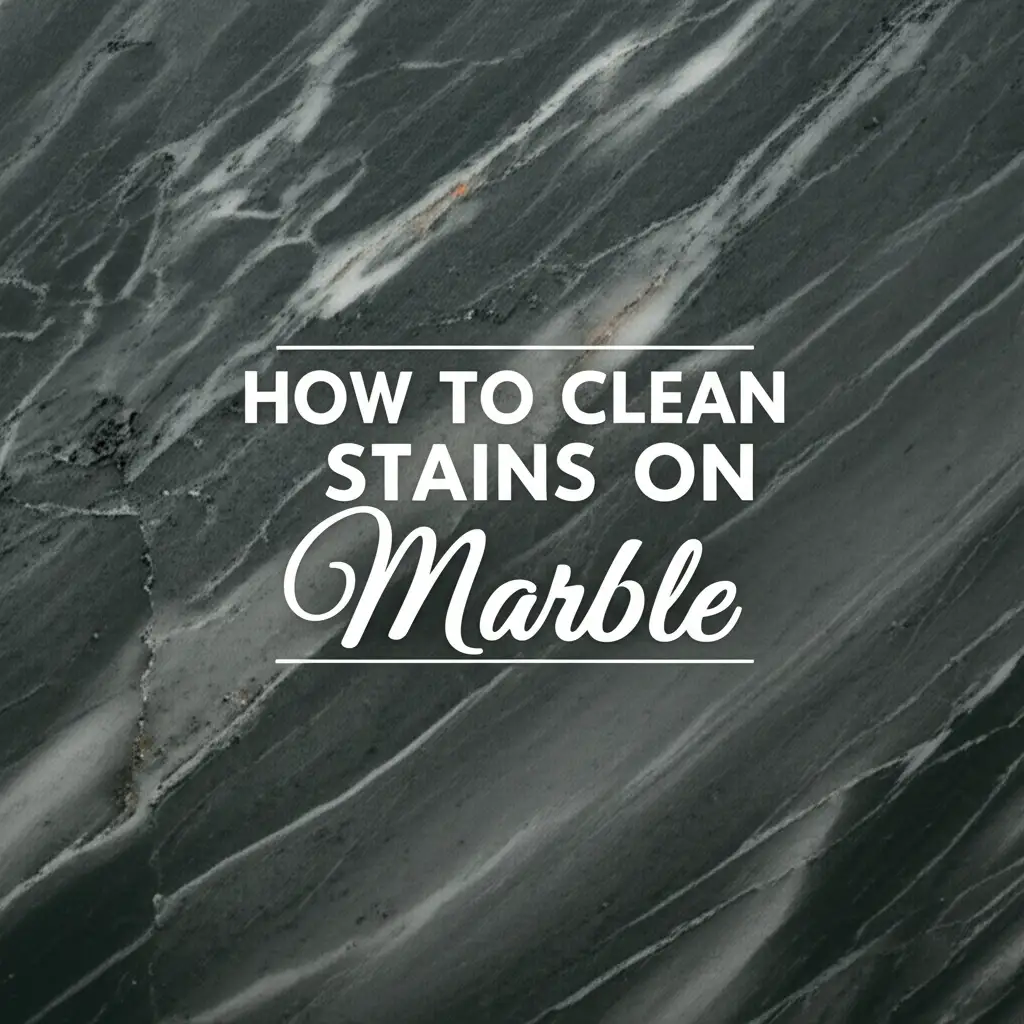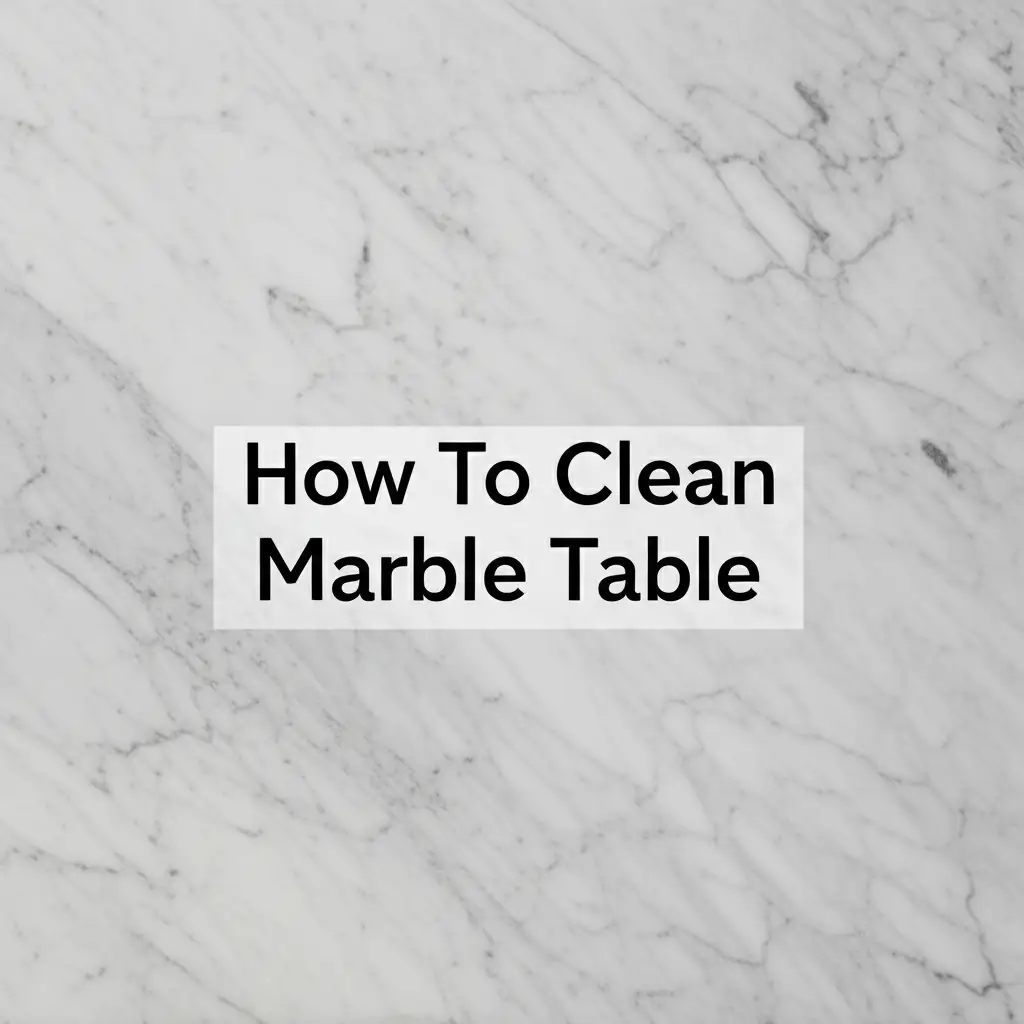· Home Care · 17 min read
How To Clean Red Wine Stain

How To Clean Red Wine Stain Effectively
A splash of red wine can quickly turn a relaxed evening into a sudden cleaning task. Many people face this common household problem. Knowing how to clean red wine stain properly saves your furniture, carpets, and clothes. I understand the panic a spilled glass causes. This guide gives you direct steps to remove those stubborn marks. We will cover immediate actions, household remedies, and professional tips. You will learn to tackle fresh spills and set-in stains.
Takeaway
- Act quickly: Blot, do not rub, fresh red wine stains.
- Use absorbents: Salt, baking soda, or cornstarch draw out moisture.
- Apply cleaning agents: Dish soap, hydrogen peroxide, or vinegar work on different surfaces.
- Test in an unseen spot: Always check for colorfastness before full application.
- Treat specific materials: Different surfaces require specific methods.
- Consider professional help: For old or large stains, call an expert.
To clean a red wine stain, act fast by blotting the spill with a clean cloth. Apply an absorbent material like salt or baking soda to soak up the wine. Then, use a mild cleaning solution appropriate for the surface, such as dish soap and water or a vinegar mixture, to lift the remaining color. Rinse and repeat as needed until the stain is gone.
Act Fast: The Golden Rule for Red Wine Stains
Red wine stains are infamous for their deep color and quick setting. Your immediate action makes a big difference in stain removal success. The longer wine sits, the harder it becomes to lift the pigment. I always tell people to address spills right away. This first step often determines how easily the stain comes out.
When a spill happens, grab a clean, dry cloth or paper towel. Gently blot the stain from the outside edge towards the center. This action prevents the stain from spreading wider. Do not rub the stain. Rubbing pushes the wine deeper into the fabric fibers. It also spreads the stain, making it larger and harder to remove. Think of blotting as lifting the wine out, not pushing it around.
Applying an absorbent material immediately after blotting is key. Common household items work wonders for this. Salt, baking soda, or cornstarch are excellent choices. Pour a generous amount directly onto the blotted red wine stain. The material will absorb the liquid and some of the color. Let it sit for at least 5-10 minutes, or even longer for large spills.
After the absorbent material sits, gently vacuum or brush it away. You will see some of the red color absorbed into the powder. This process pulls moisture and pigment from the fabric. It prepares the stain for further treatment. Quick action can save your favorite items from permanent damage.
Common Household Remedies for Fresh Wine Spills
Once you have blotted and absorbed the excess wine, it is time for cleaning solutions. Many common household items effectively treat fresh red wine stains. These remedies are often gentle yet powerful. I keep these ingredients stocked for unexpected spills. They are simple to use and usually readily available.
Salt, Baking Soda, and Club Soda: Salt works by drawing moisture out of the fabric. After blotting, cover the stain with a thick layer of salt. Let it sit for several minutes, then vacuum it up. Baking soda also works similarly and is a common option for many types of stains. Mix baking soda with a little water to form a paste. Apply this paste to the stain and let it dry completely. Then, brush it away. The paste lifts the stain as it dries. Club soda is another popular choice. The carbonation and minerals help lift the stain. Pour club soda directly onto the stain and blot with a clean cloth. This method works best on fresh spills.
White Wine and Vinegar: This might sound strange, but white wine can neutralize red wine’s color. The tannins in white wine help break down the red pigment. Pour a small amount of white wine onto the red wine stain. Blot it gently with a clean cloth. This can help fade the red color. White vinegar also works as a mild acid cleaner. Mix equal parts white vinegar and water. Apply the solution to the stain and let it sit for a few minutes. Then blot and rinse. For more general vinegar cleaning tips, you can explore how to clean a shower with vinegar.
Dish Soap and Hydrogen Peroxide: A mixture of dish soap and hydrogen peroxide is powerful for many stains. This combination is particularly effective on lighter-colored fabrics. Mix one part dish soap with two parts hydrogen peroxide. Pour the mixture directly onto the red wine stain. Let it sit for several minutes, allowing the solution to break down the stain. Then, blot the area with a clean cloth. Rinse thoroughly with cold water. Always test this solution on an inconspicuous spot first. Hydrogen peroxide can lighten some fabrics. For similar organic stains, you might also find it helpful to learn how to clean tomato sauce stain. These methods provide simple and accessible ways to tackle spills immediately.
Tackling Dried or Set-In Red Wine Stains
Sometimes, you do not notice a red wine spill right away. Or perhaps you could not treat it immediately. Dried or set-in red wine stains present a greater challenge. They are not impossible to remove. They just need a different approach and more patience. The pigment has had time to bond with the fibers.
First, re-wet the dried red wine stain. Use cold water to dampen the area. This helps to loosen the dried wine particles. Avoid hot water, as it can set the stain further. Just enough water to make the stain slightly moist works best. This step prepares the stain for deeper treatment.
For set-in stains, stronger agents are often necessary. A common and effective solution is a mixture of hydrogen peroxide and dish soap. As mentioned for fresh stains, this duo is powerful. Apply the mixture directly to the re-wet stain. Let it soak for an hour or more, depending on the stain’s age. Check the stain periodically. The hydrogen peroxide has a bleaching effect. Ensure the fabric can handle it.
Another option is oxygen-based bleach, like OxiClean. These products are color-safe for most fabrics. Always read the product instructions carefully. Mix the oxygen bleach according to package directions. Apply it to the stain and let it sit. You might need to let it soak overnight for very stubborn red wine marks. After treatment, wash the item as usual. For non-washable items, blot thoroughly. This method works by oxidizing the stain’s molecules.
For tough, persistent red wine stains, consider enzymatic cleaners. These cleaners contain enzymes that break down organic matter. Wine is an organic compound, so enzymes can be very effective. Spray the enzymatic cleaner onto the stain. Let it sit for the recommended time, often 30 minutes to an hour. Blot the area clean. Enzymatic cleaners are good for pet stains and other organic messes too. Persistence is key when dealing with old wine stains. Do not give up after one try.
Specific Surfaces: Cleaning Red Wine from Fabrics and Carpets
Red wine spills do not discriminate. They can land on various surfaces, each needing a slightly different approach. Fabric and carpets are common victims. Understanding the material type is vital. Different fibers react differently to cleaning agents. I always assess the material first.
Delicate Fabrics (Silk, Rayon, Wool): Delicate fabrics require gentle care. Harsh chemicals can damage them. For silk or rayon, blot the red wine stain immediately with a clean cloth. Do not rub. Apply a small amount of club soda or a diluted solution of dish soap. Blot gently. Avoid saturating the fabric. For wool, blot the stain. Mix one teaspoon of mild liquid dish soap with one cup of cold water. Apply with a clean sponge. Rinse by blotting with clean water. Remember, wool can shrink with excessive heat or agitation. You want to avoid that. Always test solutions on an inconspicuous area first.
Cotton and Synthetics (Polyester, Nylon): These fabrics are more robust. They can handle stronger cleaning agents. For cotton, blot the stain. Then, apply a mixture of dish soap and hydrogen peroxide. Let it sit for 15-30 minutes. Rinse thoroughly. Wash the item in cold water. For synthetics, blot the red wine stain. Then, create a solution of one part white vinegar to one part water. Apply it to the stain. Let it sit for 10-15 minutes. Blot clean and rinse. You can also use commercial stain removers designed for these fabric types. Always follow product instructions.
Carpets and Rugs: Red wine on carpet is a common problem. The trick is to act fast. Blot the excess wine with a clean white cloth. Stand on the cloth to apply pressure. This helps absorb more liquid. After blotting, apply salt or baking soda liberally to the damp stain. Let it sit for 10-15 minutes to absorb the wine. Vacuum the powder away. Next, mix a teaspoon of dish soap with two cups of warm water. Apply this solution to a clean cloth. Gently blot the stain. Do not rub. Rinse the area by blotting with a clean cloth dampened with cold water. Repeat until the stain disappears. You might also try a solution of white vinegar and water for stubborn marks. For other persistent stains, like general spots on walls, a vinegar solution can also be effective. You might find more tips on how to clean walls with vinegar. Always ensure the carpet is completely dry to prevent mold.
Hard Surfaces: Removing Wine Stains from Wood and Countertops
Red wine can spill on hard surfaces too. Wood, laminate, and stone countertops are common areas. These surfaces need different cleaning methods than fabrics. Some materials are porous, meaning they absorb liquids. This makes immediate action important. I always approach hard surfaces with caution, especially if they are sealed.
Wood Surfaces (Sealed and Unsealed): For sealed wood, a fresh red wine spill is usually easy to clean. Blot the spill immediately with a soft, clean cloth. Most sealed wood surfaces resist penetration. If a stain remains, try a damp cloth with a mild dish soap solution. Wipe gently. Dry the area thoroughly immediately after cleaning. Water can damage wood if left to sit. For unsealed wood, wine can penetrate quickly. Blot immediately. For a remaining stain, try a paste of baking soda and a few drops of water. Apply it to the stain. Let it sit for 10-15 minutes. Gently wipe it away with a damp cloth. You might need to re-apply if the stain is deep. Always test this on an unseen spot first. Then, re-oil or reseal the wood if necessary.
Laminate Countertops: Laminate surfaces are generally non-porous. This makes red wine stains easier to clean. Blot the spill right away. Use a clean, damp cloth with a mild all-purpose cleaner. Wipe the area clean. For stubborn stains, try a paste of baking soda and water. Apply it to the stain. Let it sit for 5-10 minutes. Gently scrub with a soft brush or sponge. Rinse thoroughly with water. Dry the surface completely. Avoid abrasive cleaners or scrubbing pads. They can scratch the laminate finish.
Stone Countertops (Granite, Marble, Quartz): Stone countertops, especially marble, are often porous. Red wine can seep into them quickly. Act very fast on these surfaces. Blot the spill immediately. Do not wipe. For granite and quartz, use a damp cloth with a mild dish soap solution. Wipe gently. Rinse and dry. For more stubborn stains on granite or quartz, a poultice can be used. Mix baking soda with a small amount of hydrogen peroxide to form a thick paste. Apply this paste over the stain. Cover it with plastic wrap and tape the edges down. Let it sit overnight. The poultice draws the stain out. Remove the poultice and wipe clean.
Marble is highly porous and very sensitive to acids. Red wine can etch marble if not cleaned quickly. Blot the spill. For any remaining red wine stain, use a poultice of baking soda and a tiny bit of water or rubbing alcohol. Avoid acidic cleaners like vinegar on marble. Vinegar can etch the surface, leaving a dull spot. Once the stain is gone, reseal the stone if needed. Always follow the manufacturer’s care instructions for your specific stone type.
Preventive Measures and Emergency Stain Kits
Preventing red wine stains is always better than cleaning them. While accidents happen, some simple steps reduce the risk. I have learned over time that preparedness makes a huge difference. Having the right tools on hand for an emergency spill minimizes damage.
Tips for Prevention:
- Use Coasters: Place coasters under wine glasses. This prevents rings and catches drips.
- Avoid Overfilling Glasses: Fill glasses only partially. This reduces the chance of spills during movement.
- Place Wine Safely: Keep wine bottles and glasses away from edges of tables. Put them on stable, flat surfaces.
- Consider Stain-Resistant Fabrics: If you often entertain, choose furniture and carpets made with stain-resistant materials. Many new fabrics are designed to repel liquids.
- Educate Guests: Gently remind guests to be careful. A simple “watch your drink” can prevent an accident.
- Apply Fabric Protector: For vulnerable items like upholstery or rugs, consider applying a fabric protector spray. These sprays create a barrier that repels liquids. Reapply periodically according to product directions.
Creating an Emergency Stain Kit: Having a dedicated stain kit saves time and reduces panic. When a spill happens, you want to react quickly. A well-stocked kit ensures you have what you need right away. I recommend keeping this kit in an accessible place, like under the sink or in a laundry room cabinet.
- Clean White Cloths or Paper Towels: These are essential for immediate blotting. Use white ones to avoid transferring dye.
- Salt, Baking Soda, or Cornstarch: Absorbents are crucial for drawing out fresh wine.
- Mild Dish Soap: A gentle cleaning agent for many surfaces.
- Hydrogen Peroxide: For tougher stains, especially on light fabrics. Always test first.
- White Vinegar: A natural acid cleaner for many stain types.
- Spray Bottle: For mixing and applying solutions.
- Soft Brush: For gently scrubbing stubborn areas.
- Rubber Gloves: Protect your hands from cleaning solutions.
- Small Vacuum or Dustpan and Brush: For removing dry absorbents.
- Commercial Stain Remover (Optional): Keep a trusted brand on hand for extra stubborn red wine marks.
By having these items ready, you can face any red wine emergency with confidence. Quick response with the right tools significantly increases your success rate. Prevention and preparation are the best strategies for managing wine spills.
When to Call the Professionals for Tough Wine Stains
Sometimes, a red wine stain is too big, too old, or too stubborn for home remedies. Knowing when to call a professional cleaner saves time and prevents further damage. I recommend professional help in certain situations. It is better to admit defeat and get expert assistance than to risk ruining an item.
Large Spills: A whole bottle of red wine on your new carpet or sofa is a disaster. These large spills saturate a wide area. Home methods might not reach all layers. Professionals have powerful extraction equipment. They can remove deep-set wine and moisture. This prevents mold growth and lingering odors. Large stains are difficult for a non-expert to manage effectively.
Old or Set-In Stains: If a red wine stain has been sitting for days, weeks, or even months, it is deeply set. The wine’s pigments have bonded strongly with the fabric fibers. DIY solutions might only lighten the stain slightly. Professional cleaners use stronger, specialized chemicals and techniques. They can often remove stains that seem permanent. They understand fabric types and the chemistry of stain removal.
Delicate or Valuable Items: Expensive rugs, antique upholstery, or delicate silk garments need special care. Experimenting with home remedies on these items carries high risk. You could cause irreversible damage like color bleeding, fabric degradation, or permanent discoloration. Professional cleaners have expertise with delicate materials. They use tailored cleaning methods that preserve the item’s integrity. For example, cleaning delicate fabrics requires knowledge of specific solvents and gentle handling.
Unknown Fabric or Surface Types: If you are unsure about the material of an item, call an expert. Different materials react differently to various cleaning agents. Applying the wrong solution can cause more harm than good. Professionals can identify the material. They select the safest and most effective cleaning method. This prevents accidental damage from incorrect treatment.
Failure of Home Methods: You tried all the suggested home remedies, but the red wine stain remains. This is a clear sign to seek professional help. Continued scrubbing or applying more products can worsen the stain. It might also damage the fibers. A professional can assess the situation. They can apply advanced techniques. They often have access to industrial-grade products. These products are not available to the general public. Do not hesitate to contact a reputable cleaning service. Their expertise often saves items you thought were ruined.
FAQ Section
Q1: What is the best immediate action for a fresh red wine stain? A1: The best immediate action is to blot the stain, not rub it. Use a clean, dry white cloth or paper towel. Press firmly to absorb as much wine as possible. Then, cover the damp stain with an absorbent material like salt, baking soda, or cornstarch. Let it sit to draw out more liquid.
Q2: Can white wine really remove red wine stains? A2: Yes, white wine can help neutralize red wine stains. It works by diluting the red pigments and helping to break them down due to its acidity and tannin content. Pour a small amount of white wine onto the red stain, then blot gently with a clean cloth. Follow up with a mild soap and water solution.
Q3: Is hydrogen peroxide safe for all fabrics? A3: No, hydrogen peroxide is not safe for all fabrics. It has a bleaching effect and can lighten or discolor darker or delicate fabrics. Always test a small, inconspicuous area first before applying hydrogen peroxide to the entire red wine stain. Avoid using it on wool, silk, or colored items without testing.
Q4: How do I remove a dried red wine stain from a carpet? A4: To remove a dried red wine stain from carpet, first re-wet the stain lightly with cold water. Apply a solution of dish soap and hydrogen peroxide (one part dish soap, two parts peroxide) to the stain. Let it sit for up to an hour. Blot with a clean cloth, then rinse by blotting with plain cold water. Repeat if necessary.
Q5: What should I avoid when cleaning red wine stains? A5: Avoid rubbing the stain, as this pushes the wine deeper into the fibers. Do not use hot water on fresh stains, as heat can set the stain permanently. Avoid harsh chemical cleaners on delicate fabrics or unsealed surfaces without testing first. Also, do not use acidic cleaners like vinegar on porous stone surfaces like marble.
Q6: Can professional cleaners remove any red wine stain? A6: Professional cleaners have specialized tools and stronger solutions. They can remove most red wine stains, even old or difficult ones. However, no guarantee exists for every single stain. The success depends on the fabric type, how long the stain has been present, and any previous attempts at removal.
Conclusion
Tackling a red wine stain can feel daunting, but with the right approach, success is often within reach. We have explored crucial steps to effectively clean red wine stain from various materials. Immediate action is your most powerful tool. Blotting, not rubbing, and quickly applying absorbents like salt or baking soda can prevent the stain from setting. For more stubborn marks, household solutions like hydrogen peroxide and dish soap offer effective remedies.
Remember to consider the specific surface type. Fabrics, carpets, wood, and countertops each require tailored methods. Always test cleaning solutions on a hidden area first. This step ensures no damage or discoloration occurs. Sometimes, a stain is too large or too old for home treatment. In such cases, professional cleaners offer the best chance for complete removal. By following these guidelines, you equip yourself to face any red wine spill with confidence and knowledge. Your items can look pristine again.
- wine stain removal
- fabric cleaning
- emergency stain fix
- cleaning tips




